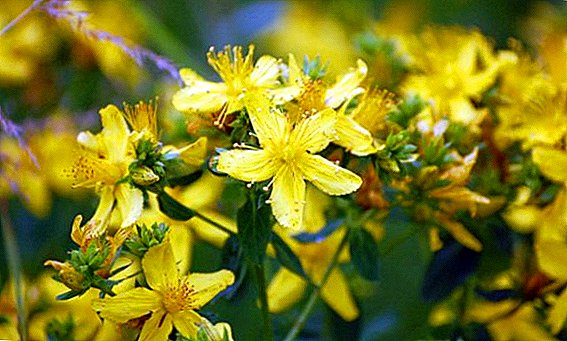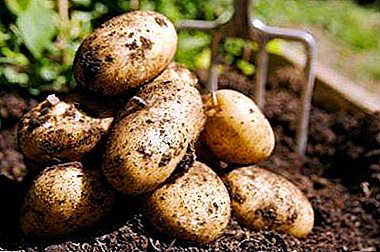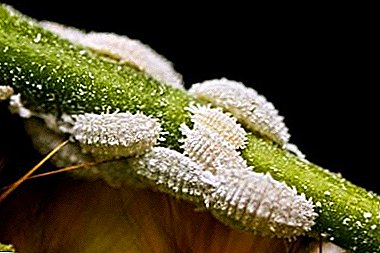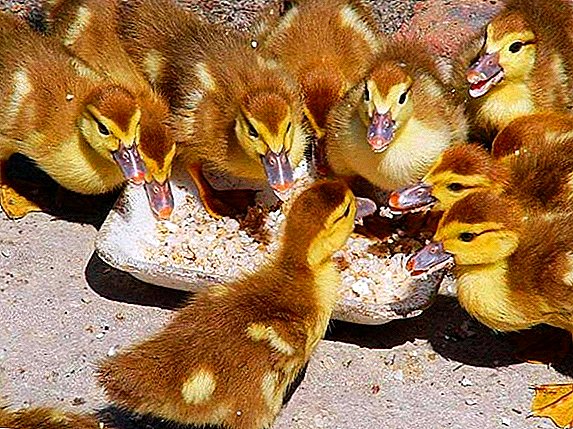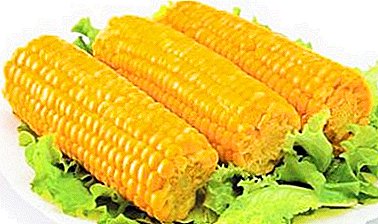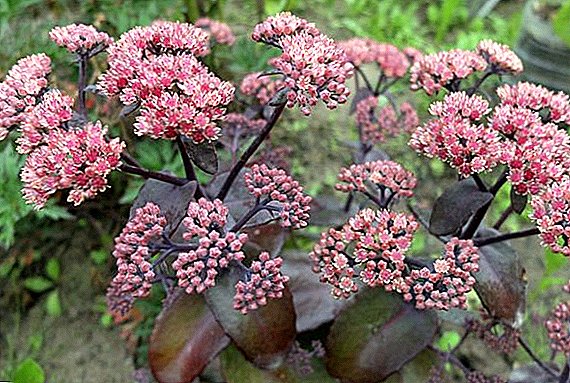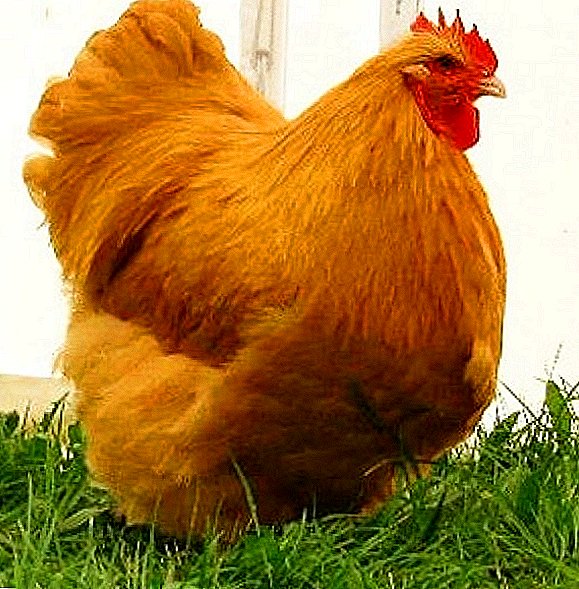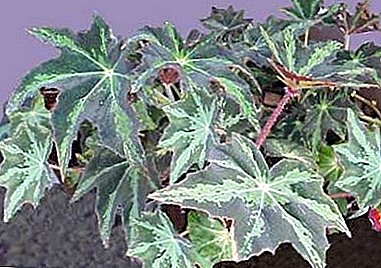
Begonia with lodging powerful pink-pubescent stems and ornamental, deeply carved with palmate leaves up to 25 cm long, in natural conditions inhabits the humid subtropics of Brazil.
Botanical name "borschikovikolistnaya" emphasizes the main feature of its structure - the shape of large leaf blades, resembling leaves of hogweed - a very common and tenacious plant of the temperate zone of Eurasia.
However, begonia borschavikolistnoy quite unpretentious, can not survive in temperate latitudes: it needs warm, moderately saturated with moisture, conditions of detention, which provides room culture.
Care at home for Begonia horticulture
Lighting
Requires bright, mostly diffused light. The best lighting would be windows facing east or west.
On the southern and southeastern side, shading may be required - especially at the height of summer, when the leaves - the main decoration of this begonia - may lose their color and get burned.
Temperature
Optimum temperature range during the whole year - from 18 to 22 degrees.
The forced period of relative rest in the room culture - from the end of October to the end of February - is mainly associated with a decrease in illumination.
Priming

This begonia does not impose special requirements on the soil substrate: it must be neutral or slightly acid, fairly loose, nutritious, with good air and moisture permeability.
Can use ready soil for begonias, or garden soil with a good dose of perlite or vermiculite, as well as prepare a mixture of equal parts of leafy earth, humus and sand.
Landing
The root system develops in the surface layer of the soil. In addition, the lodging stem forms additional roots where it comes into contact with the soil and the bush grows in breadth. therefore container for landing maybe rather wide than deepwith obligatory drainage hole. Since water stagnation is extremely unfavorable, it is better to choose porous material ceramics without a continuous layer of glaze.
At the bottom of the container must have drainage layer small pebbles or expanded clay, then a small layer of soil, over which the root system is placed, whenever possible keeping an earthen room, and fill the soil mixture to the desired level, gradually compacting it.
Transfer
Young copies require annual transplant, mature - in a year or two as it grows, propagating by dividing the bush.
Watering
Watered moderately, after drying the top layer of soil.
In winter watering frequency follows reduce.
Air humidity
Place container on moistened pebble pan or spray only the air surrounding the plant.
Top dressing

AT spring-summer period vegetations feed the plant once a week solution of complex fertilizers for room flora.
Autumn and winter this dressing is carried out once a month.
Pruning
The older the plant, the longer the stem and the more its lower part becomes bare.
To return decorative and rejuvenate begoniastretched out with age the stems are cut, leaving a "stump" with one or two scars - traces of long fallen leaves.
The growth buds dormant beneath them will awaken and new foliage will soon appear.
Bloom
Flowers appear on this ornamental deciduous begonia in the springtime on long peduncles. The color of fairly large inflorescences varies from white to distinctly pink.
If a plant spends too much energy on flowering, the color of its leaves turns pale. In this case peduncles should be removed in advance.
Breeding
Hogweed begonia multiply and vegetative, and seminal method.
Leaf propagation with a stem
Use spring and summer cuttings about 10-15 cm long, on which there is a sheet. Sections are dried.
You can apply the pre-rooting of cuttings in water, process the lower sections with root formation stimulants, or immediately plant them in ordinary soil with additional addition of sand.
Planting cover with plastic wrap, kept warm (+22-25ºС), air and moisturize.
After the formation of the root system and the formation of new shoots (approximately during the month), the cuttings are seated in separate containers with the usual soil mixture.
Reproduction leaf cuttings

Take a large, well-formed sheet, straighten it on a hard smooth surface (on glass) and a sharp blade divided from the center into segments so that in each part was one or two vascular veins.
Spread the obtained parts on the soil surface (you can slightly lower the lower ends), moisten, cover with plastic wrap, moisten, air and contain at a temperature of 20-22 degrees.
Within a month begonia will be revived even with such a "dismemberment" and forms small new leaves in the field of cut veins.
Reproduction by dividing the bush
As a rule, borschavikolistnaya begonia strongly growing in breadth. With a spring transplant, you can use this sharp instrument to divide this powerful flattened bush into several parts with root systems, sprinkle slices with crushed charcoal and plant in separate containers.
Seed propagation
This method is more often used for the reproduction of beautifully flowering begonias, but beetone seeds are also commercially available for borschwickle leaves (a mixture of varieties).
At the end of winter small seeds are placed on the surface of the soil mixture, sprayed with water, covered with plastic film, aerated, kept at 22-25ºС and good lighting.
Shoots usually appear after 2-3 weeks.
After formation two or three true leaves seedlings dive carefully reduce the temperature to 17-18ºС and limit watering.
As they grow, they are seated.
Signs of trouble
The leaves turn pale shoots stretched - The result of insufficient illumination, especially in winter. It is necessary to organize the lighting in the period of a short daylight.
The edges of the leaves turn brown and dry - dry air and overheating. Exposure to direct sunlight should be limited and air should be humidified.
The leaves brighten, they appear brown drying areas - sunburn. It is necessary to reduce the "dose" of direct sunlight.
Diseases and pests

Mistakes of care, first of all, stagnant moisture in the winter or lack of it in the summer, weaken the plant and provoke its defeat. powdery mildew. In this case, you need to optimize watering and process the begonia. fungicides.
The combination of high humidity and low temperature leads to the development root or leaf rot.
If the process has just begun, you should immediately optimize the temperature and humidity conditions and remove the damaged parts.
In the case of a strong defeat, you will have to root the cuttings, cut from healthy shoots or leaves, and keep them in appropriate conditions, and get rid of the rest of the plant.
Begonia can attack whitefly and mealybug. As a first measure, use the removal of pests with a cotton swab dipped in alcohol, or treatment with a soap solution. The most effective pest remedy - systemic insecticides.
Hogweed begonia is among the most undemanding and hardy decorative hardwood representatives of this kind.
Hogweed begonia disinfects the room in which it grows: in her presence reduced content in the air of staphylococci and spores of pathogenic fungi.
A photo
Below you will see a photo of a begonia of a borschtvikolistnoy:






